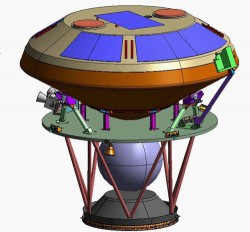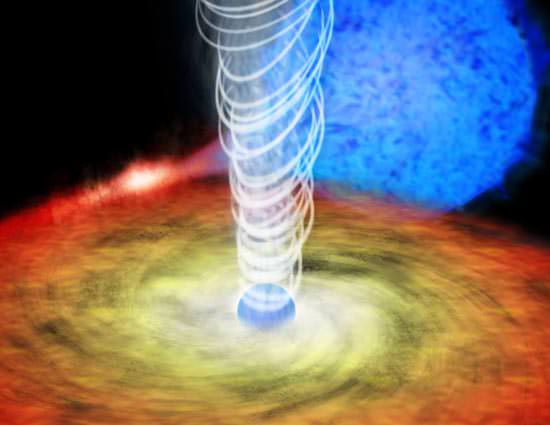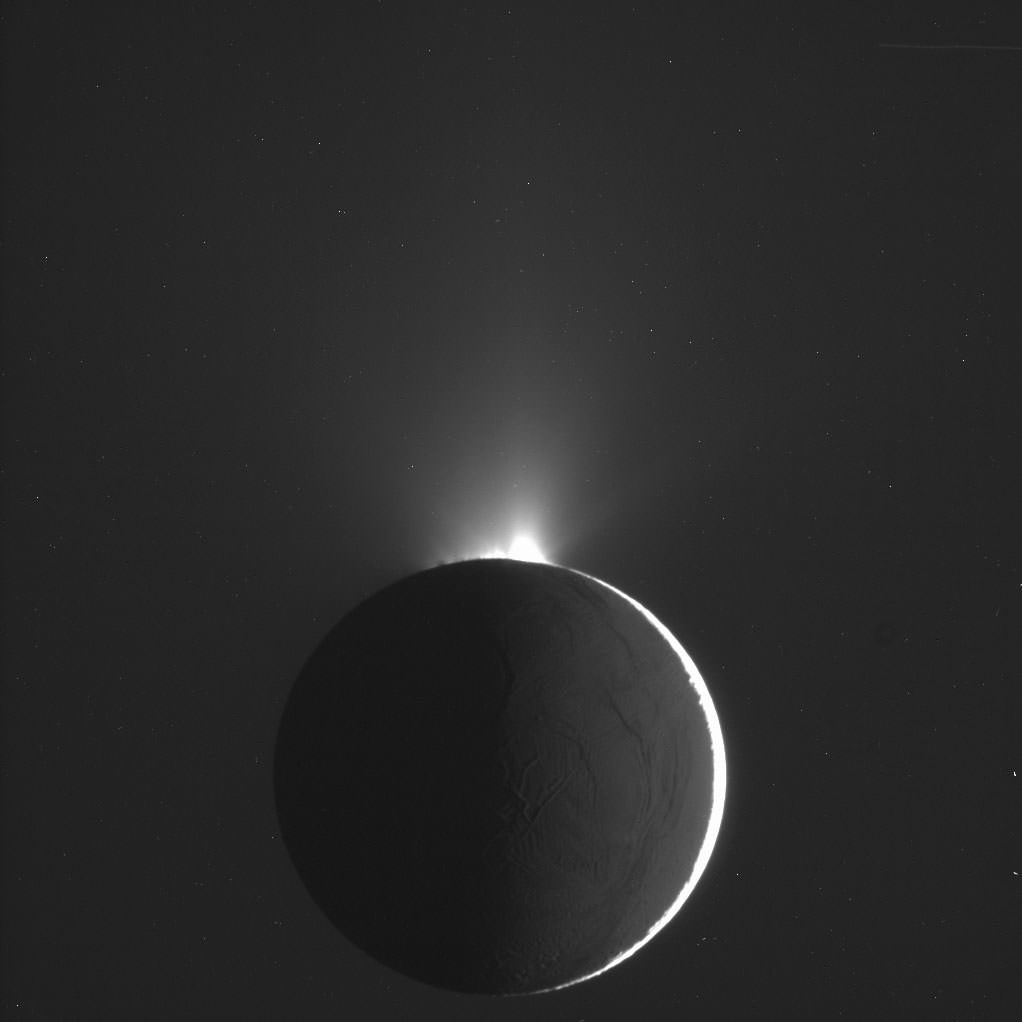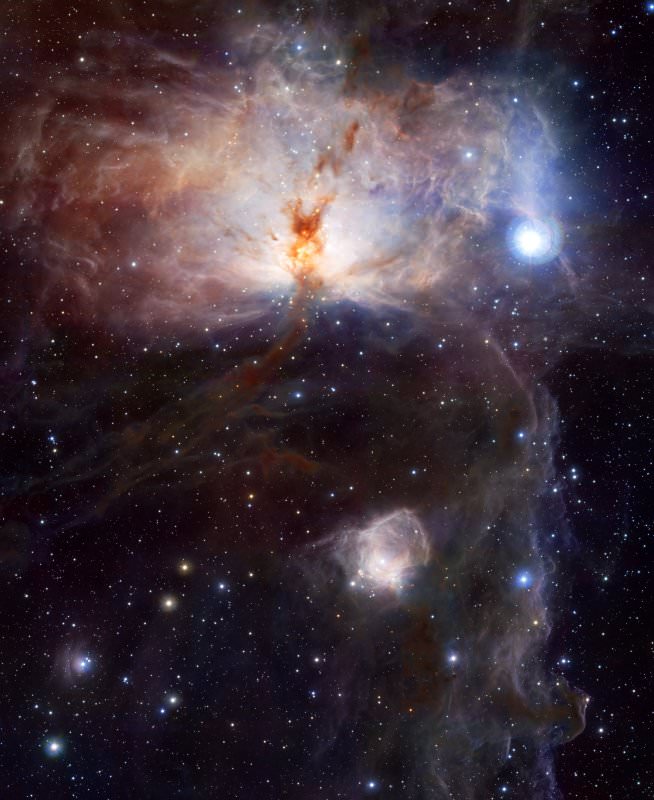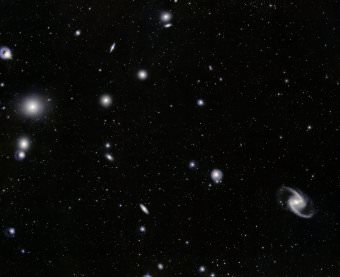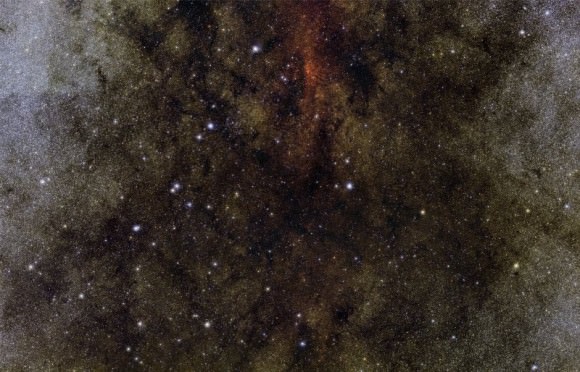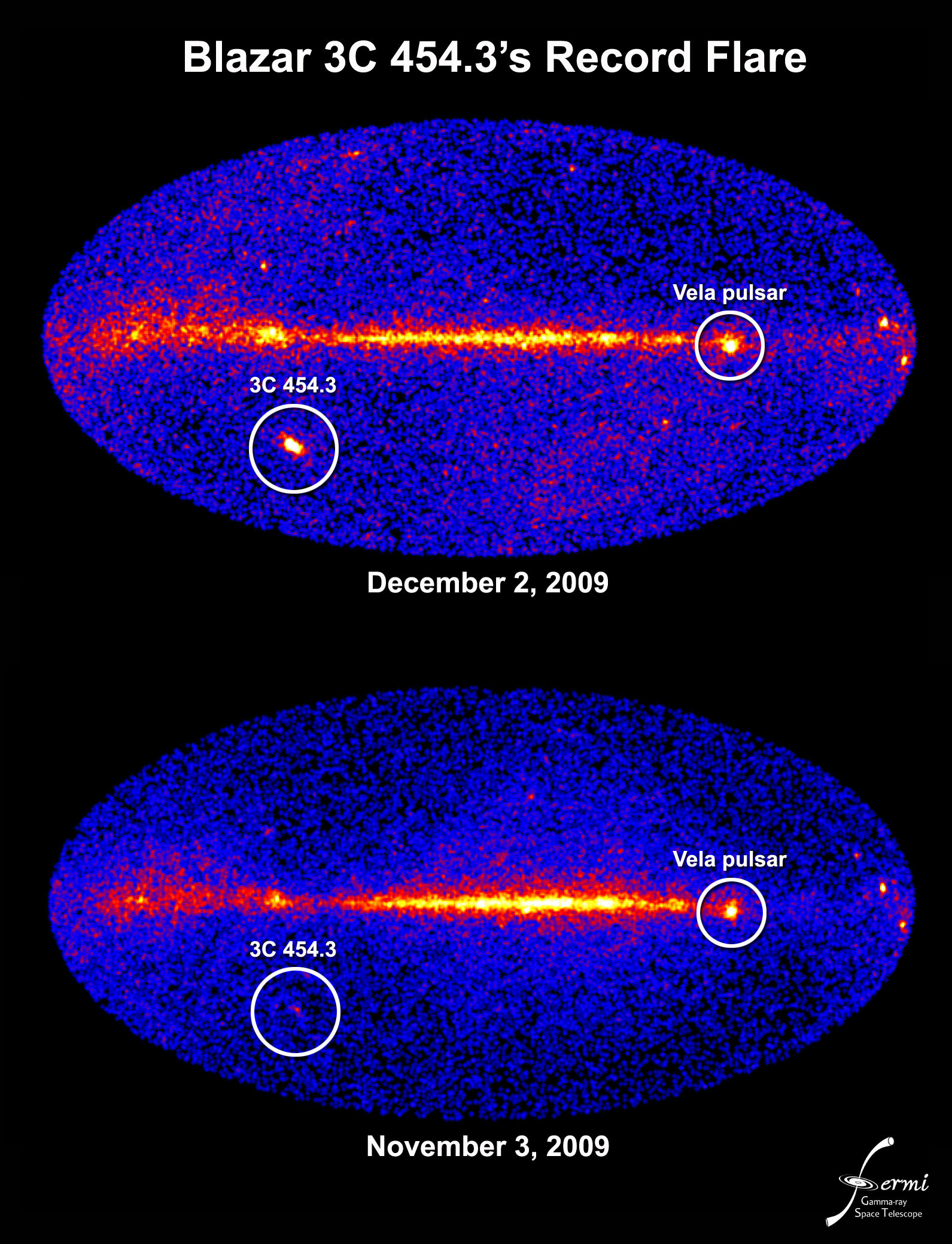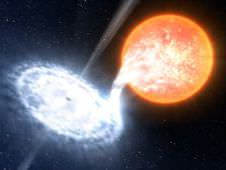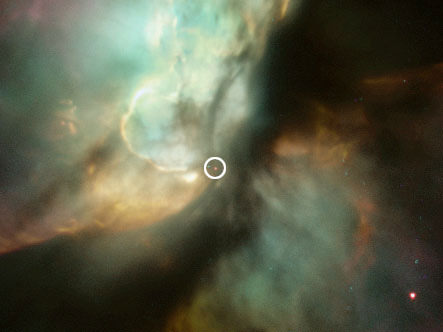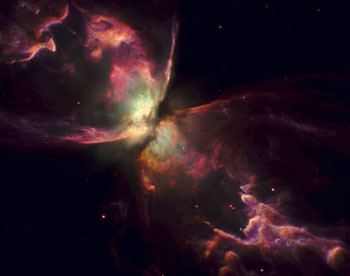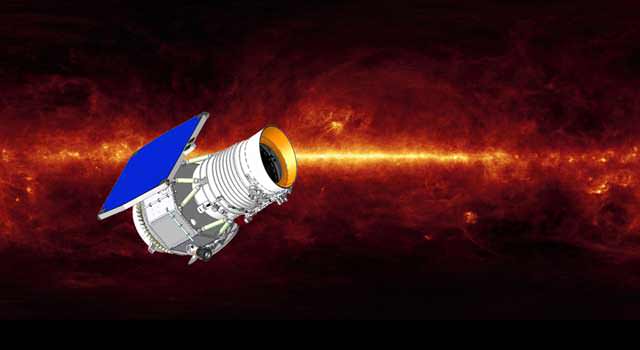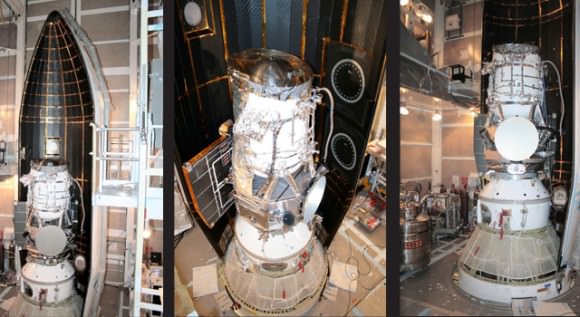Cosmic rays – particles that have been accelerated to near the speed of light – stream out from our Sun all of the time, though they are positively sluggish compared to what are called Ultra-High-Energy Cosmic Rays (UHECRs). These types of cosmic rays originate from sources outside of the Solar System, and are much more energetic than those from our Sun, though also much rarer. The merger between a white dwarf and neutron star or black hole may be one source of these rays, and such mergers may occur often enough to be the most significant source of these energetic particles.
The Sloan White dwArf Radial velocity data Mining Survey (SWARMS) – which is part of the Sloan Digital Sky Survey – recently uncovered a binary system of exotic objects only 50 parsecs away from the Solar System. This system, named SDSS 1257+5428, appears to be a white dwarf star that is orbiting a neutron star or low-mass black hole. Details about the system and its initial discovery can be found in a paper by Carles Badenes, et al. here.
Co-author Todd Thompson, assistant professor in the Department of Astronomy at Ohio State University, argues in a recent letter to The Astrophysical Journal Letters that this type of system, and subsequent merger of these exotic remnants of stars, may be commonplace, and could account for the amount of UHECRs that are currently observed. The merger between the white dwarf and neutron star or black hole may also create a black hole of low mass, a so-called “baby” black hole.
Thompson wrote in an email interview:
“White dwarf/neutron star or black hole binaries are thought to be quite rare, although there is a huge range in the number per Milky Way-like galaxy in the literature. SWARMS was the first to detect such a system using the “radial velocity” technique, and the first to find such an object so nearby, only 50 parsecs away (about 170 light years). For this reason, it was very surprising, and its relative proximity is what allowed us to make the argument that these systems must be quite common compared to most previous expectations. SWARMS would have had to be very lucky to see something so rare so near by.”
Thompson, et al. argue that this type of merger may be the most significant source of UHECRs in the Milky Way galaxy, and that one should merge in the galaxy about every 2,000 years. These types of mergers may be slightly less common than Type Ia supernovae, which originate in binary systems of white dwarfs.
A white dwarf merging with a neutron star would also create a low-mass black hole of about 3 times the mass of the Sun. Thompson said, “In fact, this scenario is likely since we think that neutron stars cannot exist above 2-3 times the mass of the Sun. The idea is that the WD would be disrupted and accrete onto the neutron star and then the neutron star would collapse to a black hole. In this case, we might see the signal of BH formation in gravity waves.”
The gravity waves produced in such a merger would be above the detectable range by the Laser Interferometer Gravitational-Wave Observatory (LIGO), an instrument that uses lasers to detect gravity waves (of which none have been detected…yet), and even possibly a spaced base gravitational wave observatory, NASA’s Laser Interferometer Space Antenna, LISA.
Common cosmic rays that come from our Sun have an energy on the scale of 10^7 to 10^10 electron-volts. Ultra-high-energy cosmic rays are a rare phenomenon, but they exceed 10^20 electron-volts. How do systems like SDSS 1257+5428 produce cosmic rays of such high energy? Thompson explained that there are two equally fascinating possibilities.
In the first, the formation of a black hole and subsequent accretion disk from the merger would generate a jet somewhat like those seen at the center of galaxies, the telltale sign of a quasar. Though these jets would be much, much smaller, the shockwaves at the front of the jet would accelerate particles to the necessary energies to create UHECRs, Thompson said.
In the second scenario, the neutron star steals matter off of the white dwarf companion, and this accretion starts it rotating rapidly. The magnetic stresses that build at the surface of the neutron star, or “magnetar”, would be able to accelerate any particles that interact with the intense magnetic field to ultra-high energies.
The creation of these ultra-high-energy cosmic rays by such systems is highly theoretical, and just how common they may be in our galaxy is only an estimate. It remains unclear so soon after the discovery of SDSS 1257+5428 whether the companion object of the white dwarf is a black hole or neutron star. But the fact that SWARMS made such a discovery so early in the survey is encouraging for the discovery of further exotic binary systems.
“It is not likely that SWARMS will see 10 or 100 more such systems. If it did, the rate of such mergers would be very (implausibly) high. That said, we’ve been surprised many times before. However, given the total area of the sky surveyed, if our estimate of the rate of such mergers is correct, SWARMS should see only about 1 more such system, and they may see none. A similar survey in the southern sky (there is nothing at present comparable to the Sloan Digital Sky Survey, on which SWARMS is based) should turn up approximately 1 such system,” Thompson said.
Observations of SDSS 1257+5428 have already been made using the Swift X-ray observatory, and some measurements have been taken in the radio spectrum. No source of gamma-rays was to be found in the location of the system using the Fermi telescope.
Thompson said, “Probably the most important forthcoming observation of the system is to get a true distance via parallax. Right now, the distance is based on the properties of the observed white dwarf. In principle,
it should be relatively easy to watch the system over the next year and get a parallax distance, which will alleviate many of the uncertainties surrounding the physical properties of the white dwarf.”
Source: Arxiv, email interview with Todd Thompson
